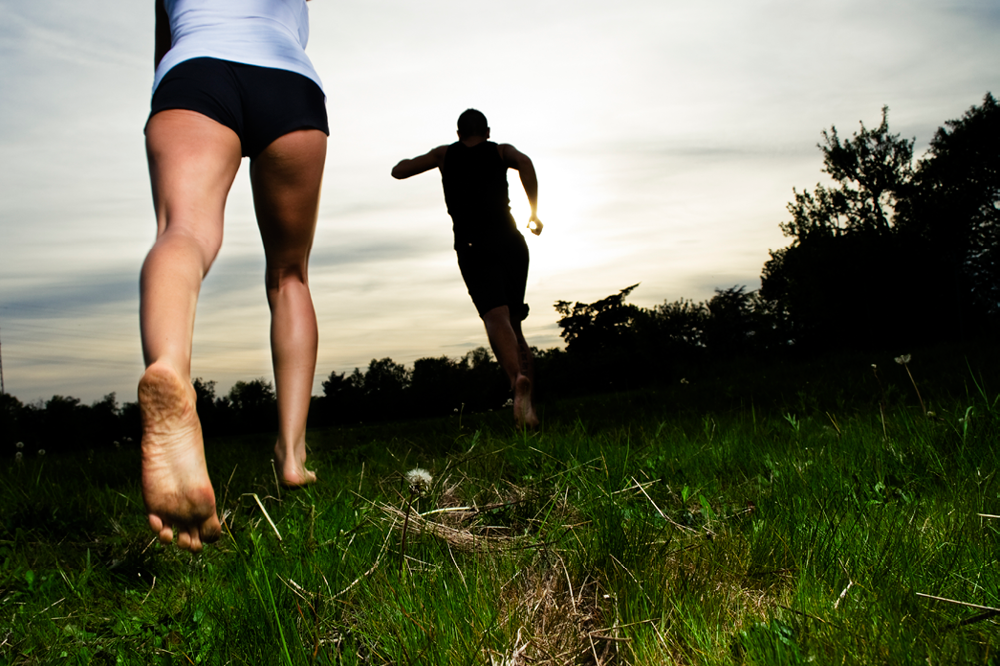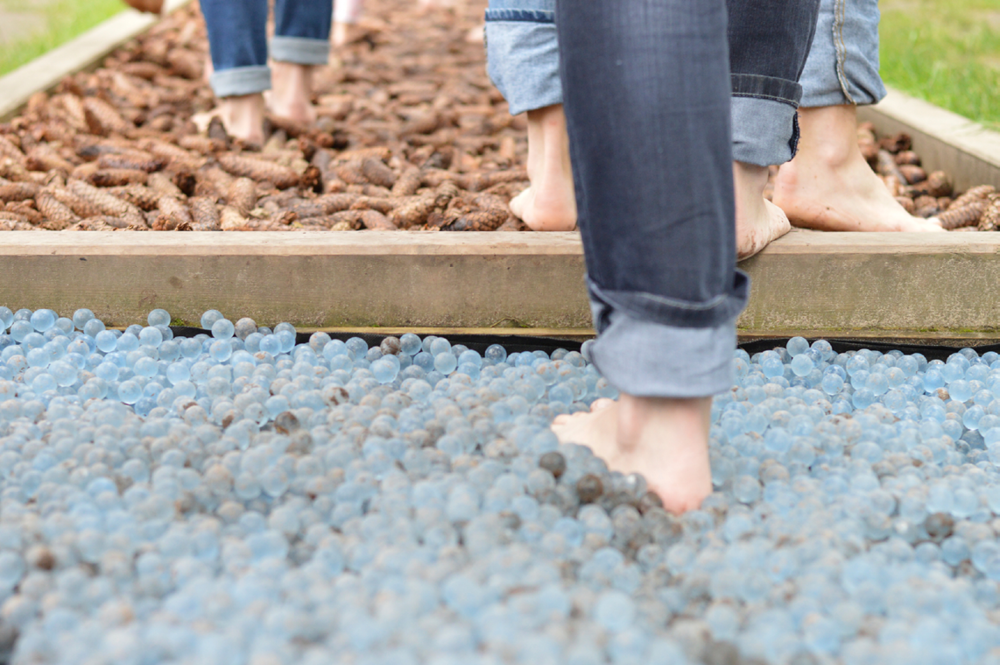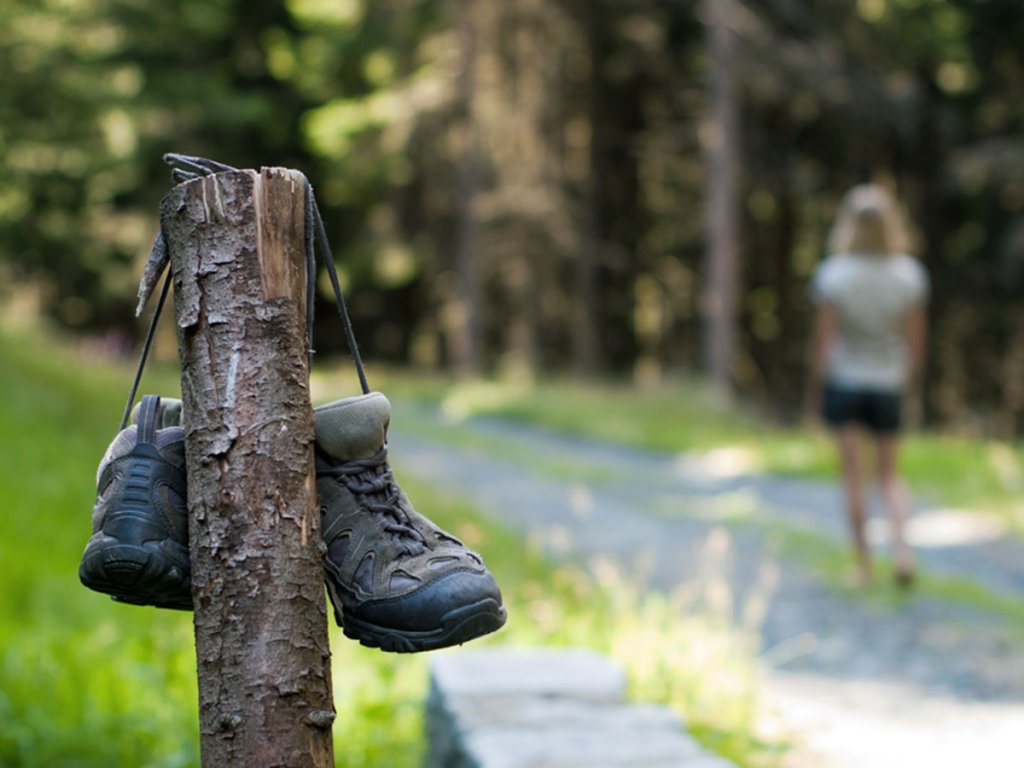Man has walked the earth for millions of years and only in recent history has it become second nature to wear shoes. However, the act of walking barefoot has suddenly become a hot new trend with many experts claiming it’s beneficial for your health. But how exactly can letting your tootsies go free improve your life? And will the barefoot movement prove to be a trend that fizzles as quickly as it waltzed in?
The Great Shoe Debate: Barefoot Walking and Earthing Facts
Also known as “earthing,” the act of walking barefoot is on the radar of many health-conscious individuals, with some even snubbing shoes altogether. Studies have shown that allowing the soles of your feet to make direct contact with the earth can improve sleep, reduce inflammation, increase antioxidants, improve your mood, help regulate stress and decrease the chances of developing painful foot ailments like bunions, corns, blisters, calluses and fissures. But as the term “earthing” describes, the benefits come only from walking barefoot on natural surfaces like grass, soil and sand — not on pavement and sidewalks. And because your soles need to touch the ground, barefoot shoes aren't an option, either. So should you be brave and “rough it” without shoes? Here are some examples of reasons why walking barefoot is good for you:
- Shoes can actually have a detrimental effect on your feet, ankles and bones by creating a situation in which you’re not walking properly or as how you naturally would without the support of the shoes. Therefore, walking barefoot can help train your body to take strides in line with your natural gait, as well as improve your balance and posture. These benefits will come both with completely bare soles as well as with barefoot shoes and minimalist shoes.

- Poor fitting shoes and the inhibition of natural foot movement that goes along with wearing shoes are two of the main causes of foot ailments like bunions, corns, blisters, calluses, fissures and deformed feet. In addition, some experts say frequently wearing shoes weakens feet and ankles, creating a situation in which your legs and feet are dependent on shoes for strength and stability. Allowing your feet to go bare can help you avoid painful foot problems as well as allow your feet and legs to become stronger and self-supportive.
- Studies are showing that “earthing” can actually change the electrical activity in the brain, creating physiological changes and increased wellbeing. The reason? Having direct physical contact with the electrons on the earth’s surface has been shown to promote better sleep, boost immunity, reduce stress and reduce pain, all of which contribute to overall happiness.
- Walking barefoot is a cost-free and natural way to receive some measure of foot reflexology and acupressure. The small pebbles, stones and rifts in the earth gently massage the soles of the feet, allowing vital energy to flow freely throughout the body.
Are There Dangers Associated With Walking Barefoot?
While walking barefoot has been shown to have many positive effects on your health, there are a few safety concerns to keep in mind. Some doctors warn that frequently going shoeless can leave one susceptible to picking up bacterial, viral and fungal infections, such as athlete’s foot, plantar warts and hookworm, which is a parasite found in animal feces. There’s also the possibility of stepping on dangerous objects like glass and nails. However, more and more foot experts are realizing that only unhealthy people with compromised immune systems are vulnerable to picking up disease via the feet, and people who consistently walk barefoot actually walk lighter than shoe-shod people and learn be more aware of their surroundings, meaning glass and sharps objects aren't usually an issue.
READ MORE: Proof That It's Perfectly Legal To Go Barefoot In Public Places In All 50 States
But there is one more safety precaution to keep in mind: barefoot virgins — or “tenderfoots” — should go easy at first. Suddenly switching from conventional shoes to bare feet can lead to overuse injuries, as it takes a little bit of time for the leg, ankle and foot muscles to adjust to your new way of walking.
Back to Basics: How to Start Walking Barefoot

Having to learn to walk barefoot seems silly, considering most of us probably took our very first steps without shoes. But after years and years of keeping our feet hidden in sandals, heels, boots and other footwear, strolling with free feet takes some getting used to. Your gait will naturally be different than when walking with shoes, so it’s important to listen to your body.
Those who wish to begin walking barefoot should start slow and gradually advance to longer periods of being shoeless. Start either indoors or on soft surfaces such as grass and sand before moving to other surfaces like soil and pebbles. Begin with just a few minutes per day and then advance to longer periods of time as your feet begin to adjust. Remember that walking barefoot may be uncomfortable at first, but as you become used to it, you’ll begin to feel enhancing health effects like decreased stress and a stronger sense of overall wellbeing. So, what are you waiting for? Take your first barefoot steps toward happiness today!


